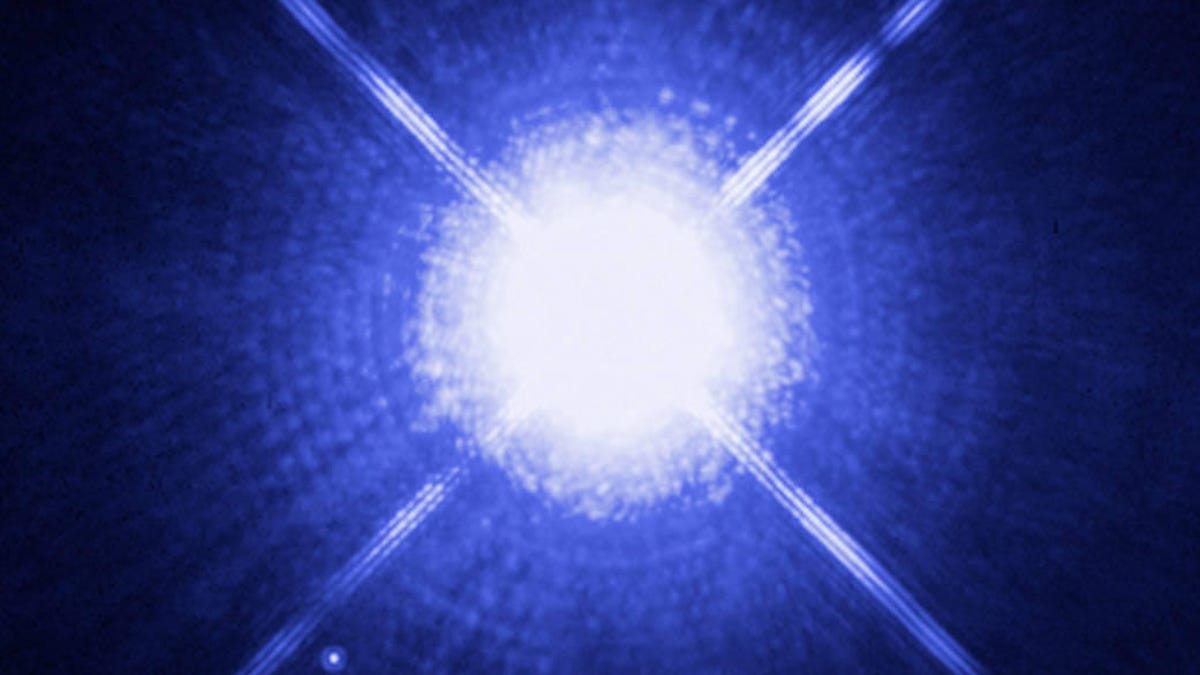'Bent light' from distant star proves Einstein right 100 years later
Einstein predicted that the space-warping gravity of stars could also bend starlight itself.

A whopping 97 percent of stars in the universe already are or one day will be white dwarf stars like Sirius B.
Just over a century after Albert Einstein managed to grok how the universe works without the aid of the fancy algorithms and space telescopes we have today, modern astronomy and technology has again issued an "I told you so" on his behalf.
Einstein's General Theory of Relativity predicts that the gravity of stars acts as a kind of magnifying glass for other more distant stars when a nearer star passes in front of them. This is because the gravity of huge objects like stars actually causes the fabric of space to curve around them.
Einstein surmised that as light from more distant stars passed by, it too would be curved or bent by the foreground star's gravity, but observing this effect would require a near perfect alignment of two stars from the vantage point of Earth.
"When a star in the foreground passes exactly between us and a background star," Terry Oswalt of Embry-Riddle Aeronautical University explains, "gravitational microlensing results in a perfectly circular ring of light -- a so-called 'Einstein ring.'"
Einstein rings have been observed from much larger, brighter cosmic objects like galaxies or supernovas behind a foreground galaxy, but finding that perfect alignment of a pair of single stars is tricky.
Some evidence of the effect came in 1919 when curving starlight could be measured around a solar eclipse, but observing light bending around a star beyond our own solar system was a far greater challenge. In 1936, Einstein wrote in the journal Science that he felt there was no hope of ever observing the phenomenon directly.
However, on Wednesday, a new study published in Science provides the first evidence of Einstein's "gravitational microlensing" by a star other than our sun. Using the Hubble Space Telescope, an international team led by Kailash C. Sahu of the Space Telescope Science Institute measured the deflection of light from a distant star as it passed in front of a nearby white dwarf star called Stein 2051 B several times over a two year period.
While the two stars weren't in perfect alignment, they were close enough that the asymmetrical version of an Einstein Ring that the astronomers observed still demonstrated the bending of light Einstein had predicted.
This illustration reveals how the gravity of a white dwarf star warps space and bends the light of a distant star behind it.
This allowed them to measure the mass of Stein 2051 B and determine what the star is made up of, which has been a long-standing mystery for scientists. In an article accompanying the study in Science, Oswalt notes that mass is "the single most important property of a white dwarf star."
"The research by Sahu and colleagues provides a new tool for determining the masses of objects we can't easily measure by other means," Oswalt explains in a separate release.
Having a new tool to measure the mass of white dwarves is particularly useful, he adds, given that 97 percent of stars in the universe will one day become or already are a white dwarf.
"They tell us about our future, as well as our history," Oswalt says.
And if history is any indication of the future, it tells us that Einstein will likely continue to be proven correct as our technology continues to catch up to his predictions.
Technically Literate: Original works of short fiction with unique perspectives on tech, exclusively on CNET.
Crowd Control: A crowdsourced science fiction novel written by CNET readers.

